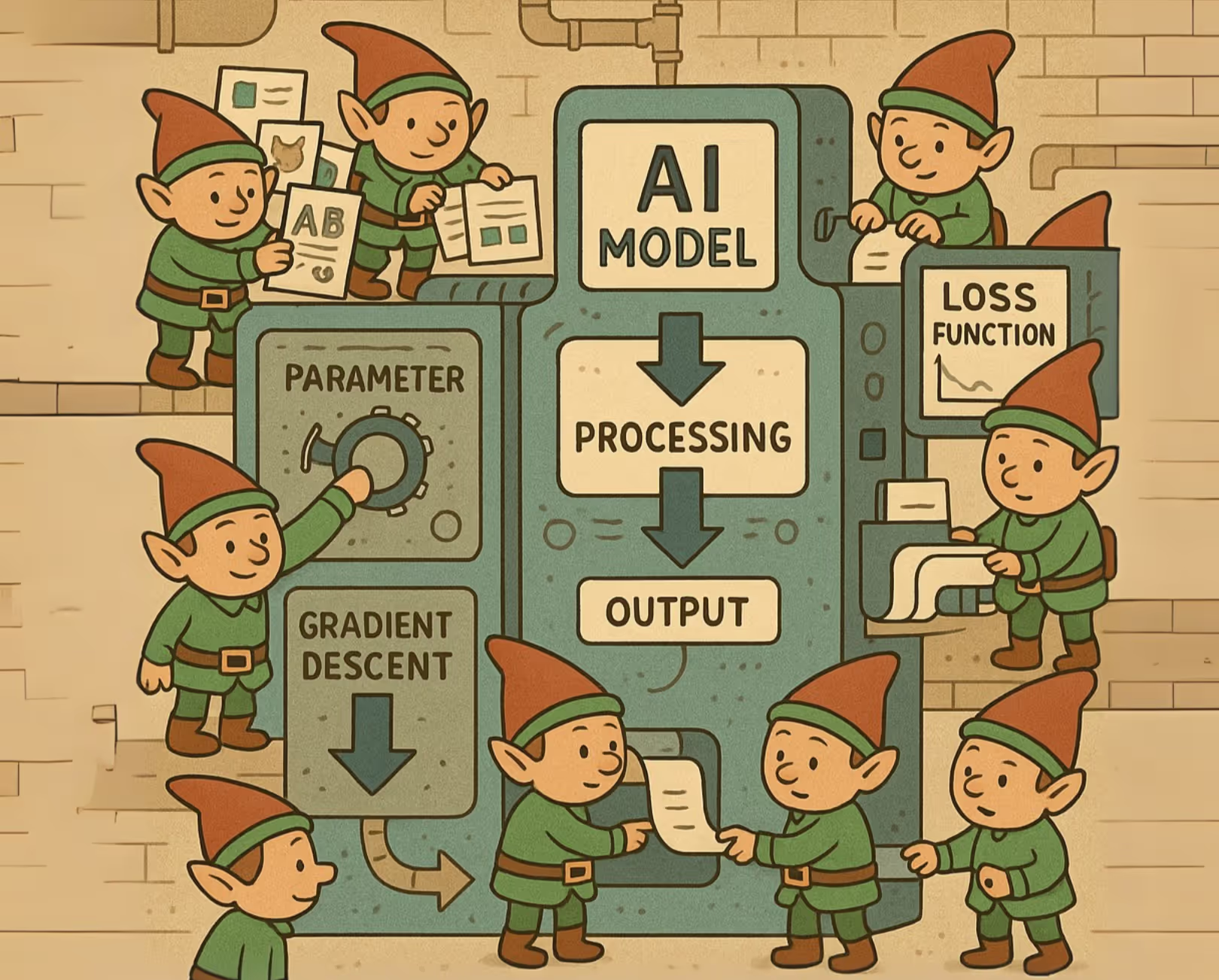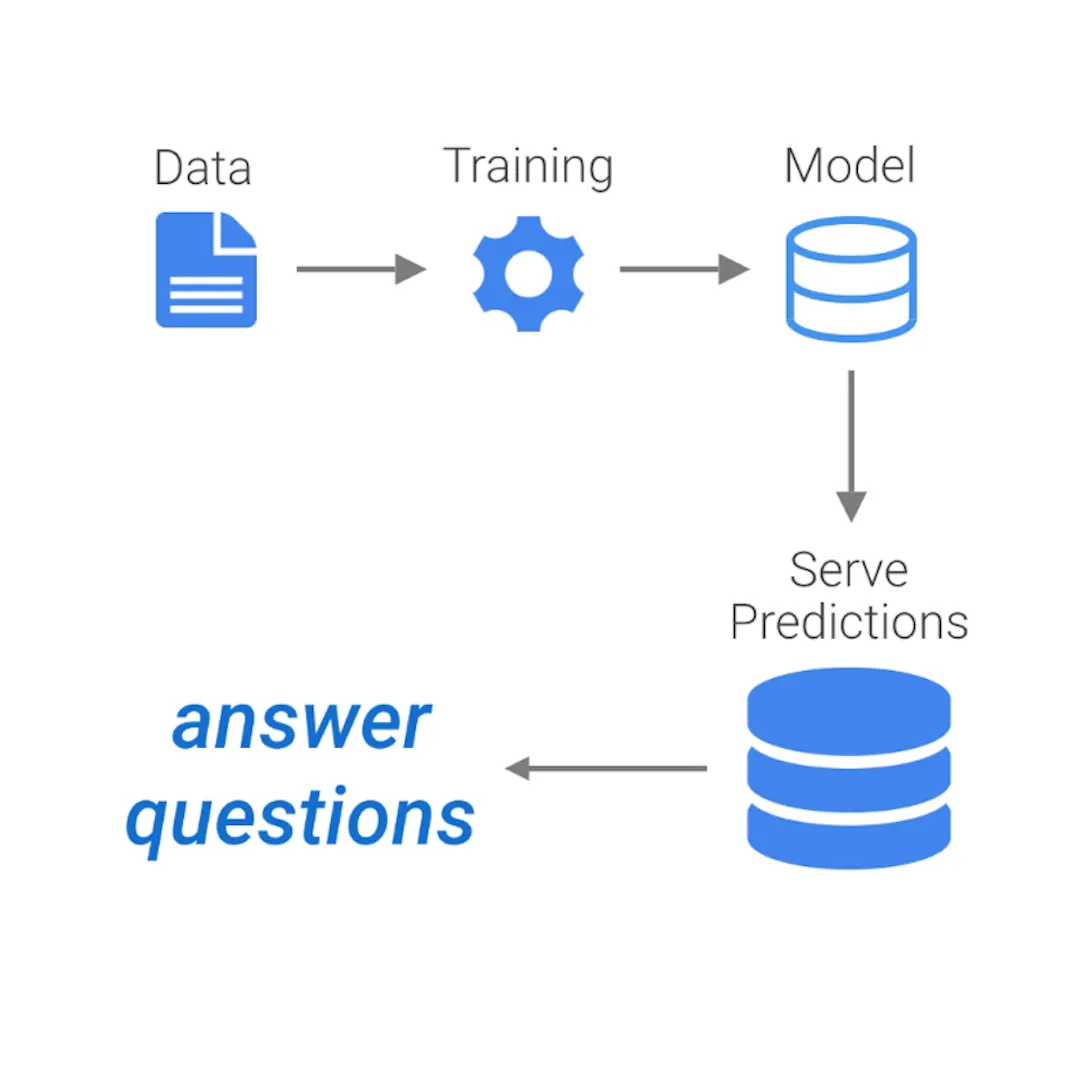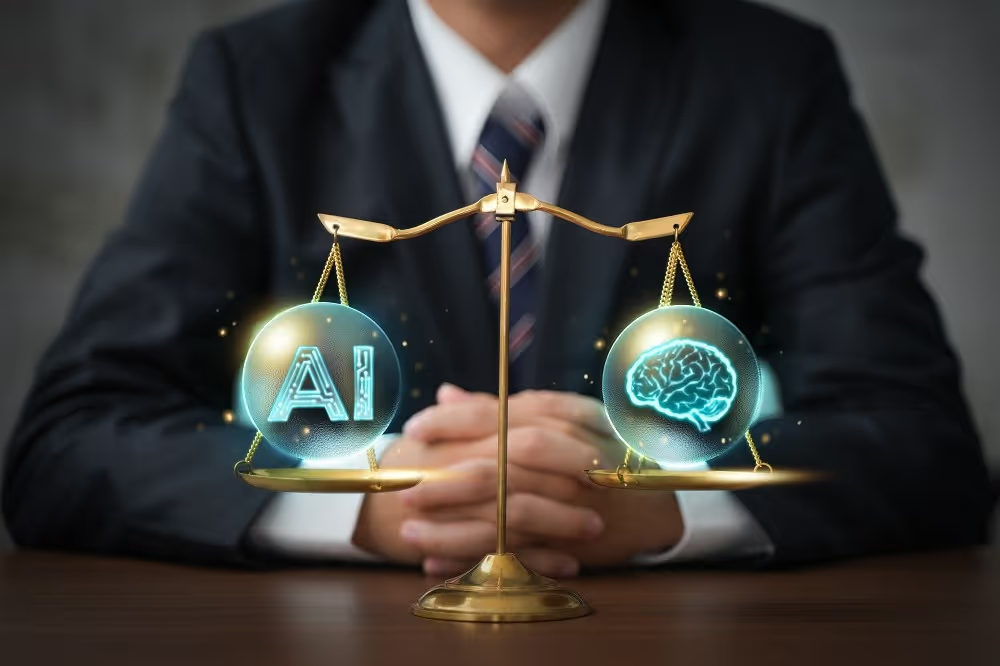
How AI Models Really Work: From Training to Answer
AI is everywhere, but how does it actually work? Discover how AI models are trained, how they generate answers, and what this means for you and your business.

Reading time: 4 minutes
Behind the Scenes of AI
AI has become part of our daily lives. From ChatGPT and DALL‑E to personalized recommendations on Netflix, artificial intelligence is everywhere. But how does it actually work? In this blog, we’ll take you behind the scenes to explain how AI models are trained, how they generate answers, and what this means for you as a user or business.
What Does AI Actually Do?
Simply put, AI is software that learns to recognize patterns. A language model like ChatGPT learns how words relate to each other, while an image model like DALL‑E learns how shapes, colors, and objects fit together. The magic happens when AI uses those patterns to create something new, like writing a text or generating an image.
How Is an AI Model Trained?
Training an AI model starts with massive amounts of data: millions of texts, images, or audio clips. In supervised learning, these are labeled (for example, “this is a cat”), while in unsupervised learning, the AI looks for patterns on its own.
Then the real work begins:
- The model performs mathematical calculations on the data.
- It makes predictions, like which word is likely to come next.
- It compares predictions to the correct answers and adjusts itself.
- This process repeats millions of times until the model has learned enough patterns.
Think of it like a child learning to speak: the more it hears, practices, and gets corrected, the better it becomes.

How Does AI Work Technically?
AI models are built with neural networks—digital versions of brain cells. These networks have layers:
- Input layers: receive the data.
- Hidden layers: process the information.
- Output layers: produce the result.
Key terms:
- Parameters: millions of ‘dials’ that are fine-tuned to improve predictions.
- Gradient descent: a method to reduce errors step by step.
- Loss function: a measurement of how far the prediction is from the correct answer.
How Does AI Generate an Answer?
When you ask a question, AI converts it into an input vector (a string of numbers). This flows through all the network layers, with calculations at each step. Finally, it produces an output: a text, image, or answer.
Interesting fact: AI works probabilistically. That means it makes choices based on probability and doesn’t always give the same answer. Settings like temperature control how creative or predictable the output will be.

What Does This Mean for You and Your Business?
So, what does this mean for how you work and the opportunities for your business?
- Good prompts make a difference: the clearer your question or task, the better the answer.
- AI has no understanding: the model doesn’t “understand”; it only calculates.
- Human oversight is essential: AI can hallucinate or make mistakes. Use it as a tool, not as the final decision-maker.
Those who use AI smartly and understand its limits can unlock major efficiency gains and drive innovation.
Conclusion: AI as a Powerful Tool, Not Magic
AI models are impressive, but they’re not magic boxes. Behind every answer are mountains of data, complex math, and optimization processes. For businesses, the opportunity is clear: those who invest in smart AI use and prepare their teams are taking a big step toward the future.
🔍 Curious how your organization can get started? Get in touch with us and discover how we can help.
This text has been optimized using ChatGPT


